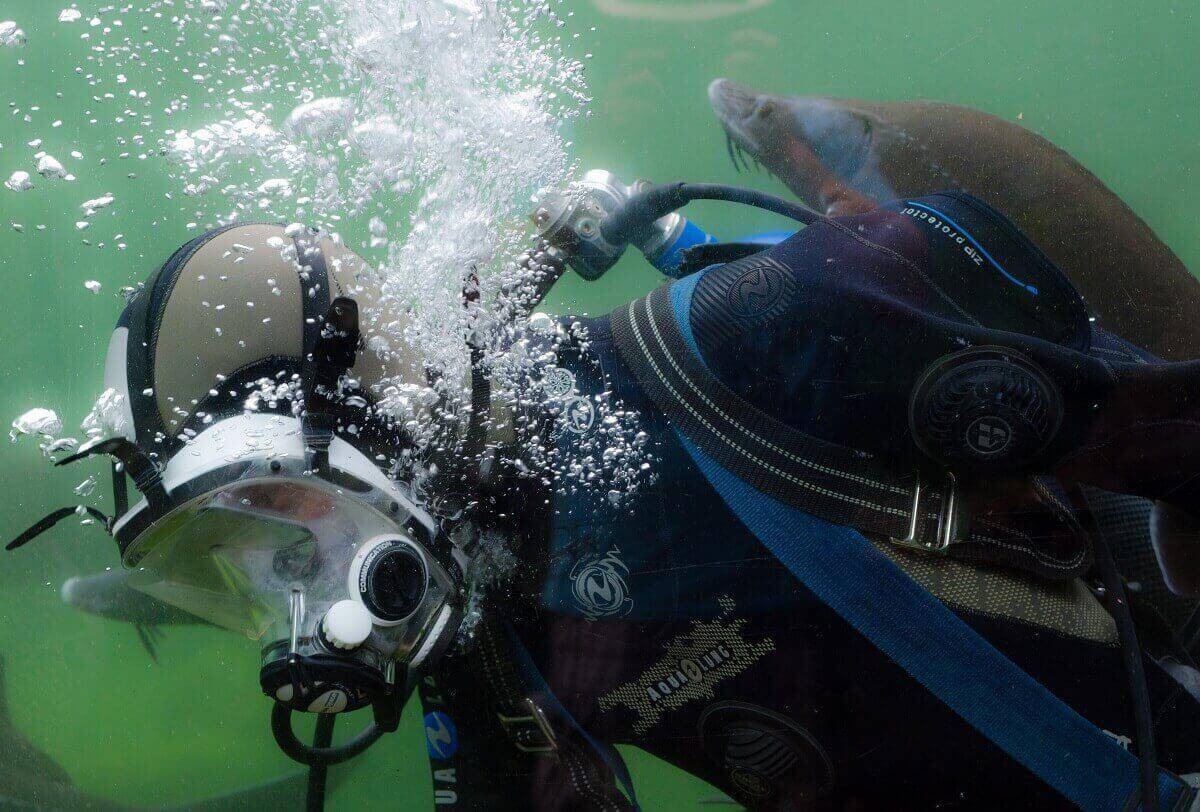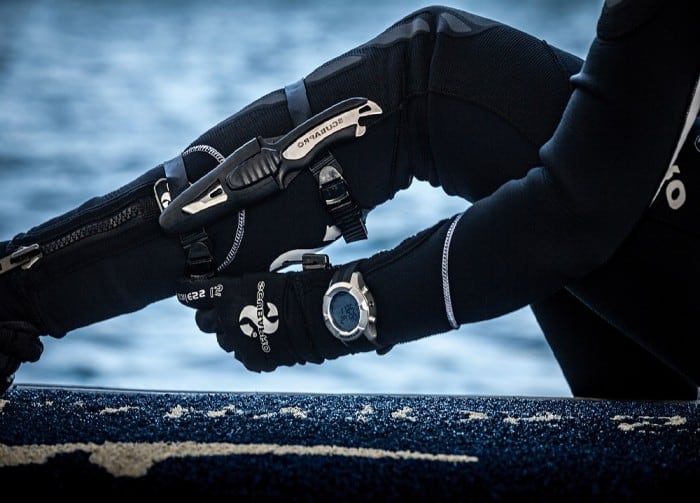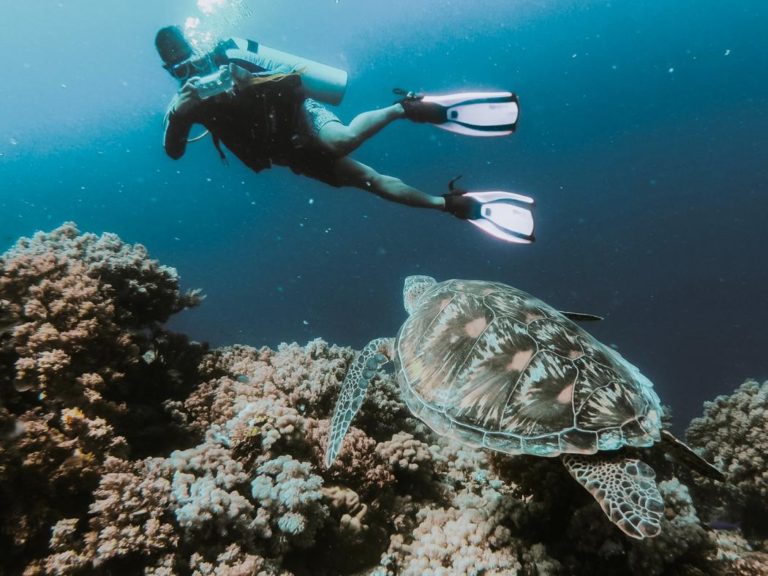When Scuba Diving What Are the Bends?
The bends also known as Decompression Sickness (DCS) is one of the most common injuries in scuba diving. If you are new to scuba diving and the terms used you are probably wondering what are the bends.
When scuba diving the bends are a term used to refer to injuries resulting from nitrogen bubble buildup in the body tissues or in the bloodstream. This happens when scuba divers ascend very fast, fly too soon after scuba diving or participate in activities such as hiking to high altitudes immediately after scuba diving.
The bends is a term initially used to describe the illness resulting from nitrogen buildup in the body. Probably due to the fact that those with the illness tend to suffer from joint pain which can cause bending.
Today the term Decompression sickness (DCS) is widely used but there is no harm in using other terms such as ‘the bends’. When talking to someone with scuba diving experience or a doctor they will understand you perfectly.
The bends can onset immediately after surfacing or take up to 48 hours to show any signs or symptoms. Depending on the individual it’s important to keep an eye on your health and seek medical attention if you notice any signs or symptoms of DCS.
In this article, we’ll look deeper into DCS, what happens when you get DCS, at what depth you can DCS, and how to treat and prevent the illness among other factors.
Keep reading to learn more!
What Do the Bends Feel Like
The bends or decompression sickness can range from mild body aches to very painful joints.
Some scuba divers describe the bends as very uncomfortable, one feels like something is stubbing you from inside their body.
The severity of the bends differs causing differences in how each diver feels. In mild cases this can feel like you are just tired or experience dull body aches, in severe cases, the feeling will vary from sharp back pains, ear pain, skin irritation, confusion, blurred vision, nausea, ringing ears, and memory loss.
Every diver with the bends is most likely to describe a unique feeling of what their body is going through. We all have different tolerance levels to pain which can also cause differences in how one feels.
However, some symptoms are quite common among all divers with the bends. Some of these may include unexplained fatigue, and body, and joint aches.
First-time divers are particularly encouraged to look out for any symptoms that may suggest one has the bends. Since it’s your first time diving you may lack the knowledge of what it feels like or what to look out for.
Experienced divers can easily note when thy have the bends or when their buddy shows symptoms.
It’s also very common for divers to be in denial of having the bends. For this reason, it’s important to look out for your buddies even after the dive.

What Depth Do You Get the Bends
Anyone can get the bends if your ascent was fast despite the diving depth.
Decompression sickness is however most common among deep divers. This is because they use highly compressed air (enriched air) such as oxygen mixed with helium or nitrogen.
Divers diving over 60 ft. have a higher chance of developing DCS if they fail to ascend properly. At these depths, divers use highly compressed air which increases the chances of absorbing a lot of nitrogen during the dive.
In addition, depending on the dive length divers will absorb more nitrogen in the body. When a diver spends more time underwater, they need to spend more time ascending.
Dive computers and dive tables guide divers on how much time they can safely spend at given depths and how much time they will need to ascend.
Making stops during the ascent is necessary to allow for off-gassing of the excess nitrogen.
Recreational scuba divers also follow the guidelines provided to prevent the bends. This is important since pressure changes as we dive underwater. Air pressure in the air cylinder also increases compared to the air we breathe while at sea level.
This change in pressure increases the amount of nitrogen absorbed even at 30 or 20 ft. underwater.
Ascending correctly and following the dive computers or tables, it’s quite easy to avoid “the bends”
What Happens When Scuba Divers Get The Bands?
When drivers fail to follow the dive tables or computers and ascend too fast, the body fails to release the excess nitrogen. Dissolved nitrogen turns into bubbles during the fast ascend which remains trapped in the joints, body tissues, and the bloodstream.
When this happens it’s said the diver has the bends, signs, and symptoms will appear after surfacing.
Think of an ascending scuba diver as a shaken bottle of soda or any other carbonated drink. Opening the bottle the drink comes out at very high pressure in form of bubbles. This same principle applies to ascending for scuba divers.
Nitrogen absorbed turns into bubbles as it tries to get out of the body. There are other risks associated with fast ascend such as gas embolism.
Some scuba divers will notice the symptoms within an hour after surfacing or less. In other individuals, it may take up to 36 hours before any sign is visible.
When a scuba diver has the bends they may feel very tired after doing absolutely nothing or very light activities. Other divers will feel joint pains, experience difficulty breathing, confusion, losing balance, back pains, and ear pain among other signs and symptoms.
Upon noticing these signs, seek immediate medical attention. Divers are advised against taking any pain relievers unless prescribed by the doctor.
During the intervention period, it’s important to record all signs and symptoms visible. Rerecord activities done after the dive, any occurrences during the dive such as emergencies that may have resulted in fast-paced ascent among others.
All this information is important to help in the treatment and also access the severity of the bends.

How Are the Bends Prevented and Treated
Luckily the bends can be prevented and treated if addressed immediately.
As mentioned above, denial is very common among divers. Look out for your buddies for any signs or symptoms of the bends. The goal is to address the issue as soon as it’s noticed.
Preventing the bends
To prevent the bends, always dive with professionals from reputable agencies. These are especially important for beginners and first-time divers. The instructors guide you on how to ascend making necessary stops to allow enough off-gassing.
Get certification or training with a qualified diving agency. Certifications in diving equip divers with all necessary skills to safely scuba dive. Certification shows you have knowledge of what is expected of you and that you are aware of the risks involved.
Follow dive tables or dive computer guidelines when ascending and when taking multiple dives in a day.
Other ways to prevent the bends include, taking time to off gas before flying to your next destination. Avoid hiking immediately after scuba diving since this can have the same effect as flying after scuba diving.
Chang in altitude and pressure can onset DCS as it’s like a fast-paced ascent. It’s recommended to at least have 18-24 hours after scuba diving before you can fly.
Treating the Bands
When addressed as soon as possible the bends are easily treated and full recovery is seen among divers.
Call the nearest medical facility for help when you or your buddy has DCS signs and symptoms. Next contact the local DAN.
Divers in denial or who take some time to see if the signs go away are putting their lives at risk. If not treated early, the bends can be fatal.
Treatment includes administering 100% oxygen, and fluids. This helps in recompressing and stabilizing the diver.
Dives with DCS then receive a neurological exam to establish if any of the nervous parts are affected and could need special treatment.
Rashes or pain on specific body parts could be an indication of a neurological issue.

Can You Survive the Bends
Yes, you can survive the bends. Many dives have at one point had the bends and many recover fully.
Staying alert and taking note of any unusual feeling in the body is important in surviving the bends. Don’t ignore anything unusual or feel shy to seek medical advice. I would rather feel stupid asking if what I’m feeling could be the bends than ignore the signs and put my life at risk.
Many severe and fatal cases of the bends happen when divers are in denial that they have the bends or by simply ignoring the early signs.
Remember you can get the bends even after following the required ascend rates and guidelines. You can also get the bends even as an experienced diver.
Parting Words
We’ve looked at what are the bends in scuba diving, what happens when you get the bends, and how to prevent and treat the bends.
Although the most common injury among scuba divers, you can fully recover and go on scuba diving. The most important thing to do is seek immediate medical attention once you notice any of the signs associated with the bends.
I hope this article provides useful information on the bends and how to prevent them.
Happy and safe diving!







